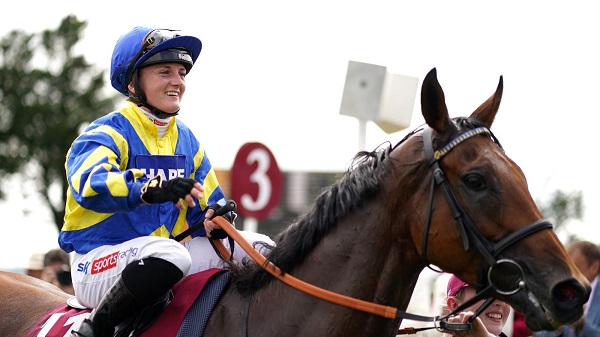Zimbabwean racing columnist disagrees with sex allowances and has an alternative suggestion
Was It Broken?
As a dyed-in-the-wool philogynist – Writes The Centaurist – I was surprised to learn that, out of the blue, lady jockeys in Southern Africa are going to be afforded 1.5kg weight allowances – because they are ladies.
Then I went on to read about the reasons for this change which implies ladies are lesser beings than men.
In making such decisions we must ask ourselves “What outcomes are we seeking to achieve by making such a sex allowance?”
Are ladies less able jockeys than men – do we need to level up the playing field a bit? Well no – as Hollie Doyle and many other jockettes around the world amply testify.
Are we short of jockeys – do we need to find a way to encourage more candidates to join the sport? Well no – as a good number of existing jockeys will testify – many just can’t secure enough rides and thus struggle to make a reasonable living.
Are there some conditions associated with becoming a jockey which are prejudicial to women? Well no – and if there are, they should be removed – giving a sex allowance is not the answer.
For me the system was never broken so why are we trying to fix it? – and in a way which makes lady jockeys into second-class citizens when, in fact, equine sports around the world allow ladies to compete on level terms with men, something which should be applauded – not messed around with. Apart from snooker and darts, equine sports allow us to recognise the real potential of our ladies.
And if the real reason for providing a sex allowance for ladies is to see a lot more female jockeys riding, then another option is far more equitable. As we all know, ladies are typically smaller and lighter than men – what we should be doing is to address the issue of minimum riding weights. I have always favoured keeping minimum riding weight at 46 kg. If we went back to that, and did a bit of constructive promotional work, I think we could achieve the results sought by the intervention and, in addition, we would create many more opportunities for horses to race competitively – with a handicap weight spread from 46kg to 60kg – or even higher – thus reducing the occasions where horses compete under MR sufferance.
Come on lady jockeys – do the right thing, and do not support this nonsense.




